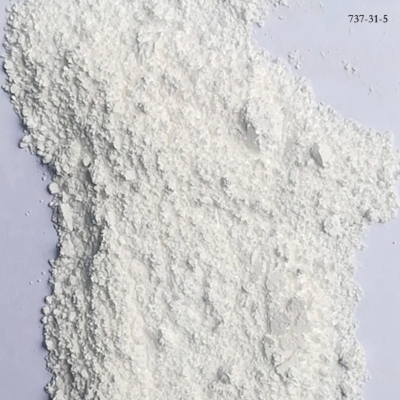-
Categories
-
Pharmaceutical Intermediates
-
Active Pharmaceutical Ingredients
-
Food Additives
- Industrial Coatings
- Agrochemicals
- Dyes and Pigments
- Surfactant
- Flavors and Fragrances
- Chemical Reagents
- Catalyst and Auxiliary
- Natural Products
- Inorganic Chemistry
-
Organic Chemistry
-
Biochemical Engineering
- Analytical Chemistry
-
Cosmetic Ingredient
- Water Treatment Chemical
-
Pharmaceutical Intermediates
Promotion
ECHEMI Mall
Wholesale
Weekly Price
Exhibition
News
-
Trade Service
Recently, with the listing of emerging Biotech companies such as Yunding Xinyao and Deqi Pharmaceuticals, the License-in model of China's innovative pharmaceutical company has once again become the focus of public opinion.
fact, the model has never seemed far from controversy since its inn.
the domestic innovation drug direction of entrepreneurship and investment and financing activities began in 13, 14 years or so.
In addition to the typical model of scientists developing new drugs on their own, a group of innovative pharmaceutical companies represented by Reding Pharmaceuticals, which focuses on the License-in model (in fact, there have been several earlier attempts) have been born almost simultaneously and are growing rapidly.
, the license-in pattern continues to expand in scope.
, companies such as Baiji, which had previously focused on independent research and development, are also starting to make a strong case for License-in, with heavy trading frequency.
On the other hand, in addition to the industry elite, more and more investment institutions have also begun to take the initiative to "save the bureau", using funds, contacts, project resources and many other advantages to create a luxury team and project star portfolio, taking advantage of the momentum to promote valuation all the way up, and take advantage of Hong Kong stocks and the capital market such as the Science and Technology Board to quickly IPO.
While the same is the development and operation of innovative drugs in China, can start-ups that focus on the License-in model be attributed to the usually recognized innovative pharmaceutical companies, or further, should they enjoy the dividends that industry policies and capital markets confer on innovative pharmaceutical companies? Over the years, the debate has never subsided.
, yes or no, is a matter of cognition and definition.
's really valuable discussions should perhaps focus more on what the License-in model means for The Current Chinese Pharmaceutical Industry.
downstream development is also an innovative component of the author thinks that from the perspective of promoting China's innovative drug research and development and public benefits, the License-in model is indeed active as a business model.
the development of innovative drugs is not Hermes as a bag or L'Oreal as lipstick.
The successful launch of an innovative drug has a lengthy industrial chain behind it, from upstream drug discovery to downstream clinical research called research and development, but the traditional understanding of the scope of innovation tends to focus more on source innovation and tends to see the upstream Research as the true source of innovation, which is biased.
without subsequent in-depth development, the value that upstream Research can really form is very limited.
For innovative drug research and development, the upstream link usually includes Drug Discovery-related molecular screening, design optimization, until the PCC, downstream is mainly clinical development and registration, including PCC to IND this period of DMPK, toxic, CMC and other preclinical research links.
The current mainstream License-in model focuses on selecting assets that have entered clinical or near-completion of preclinical studies abroad, obtain domestic or Greater China authorization, obtain domestic declaration of IND, and then conduct clinical development and promote listing.
this mean that the mainstream License-in model, after winning the project, is clinical research in the domestic development process, a process that is weaker than the earlier Research value creation in the innovation drug development chain? Obviously not.
exploration and verification link itself is also an important component of original innovation.
Nate compounds also stop, single resistance also stop, not after opening the brain hole to draw a structure or pile a sequence, need to go through pre-clinical and clinical research exploration and verification to land, not to mention the latter amount of time, funds, trial and error and other costs.
research and development investment in innovative drugs, the big head is spent on clinical trials (the drug company CMO's sky-high wages are also evidenced).
clinical trials of new drugs are no better than code farmers running procedures, almost zero-cost tests to see a yes or no, whether there are bugs.
The entire clinical trial process, including the dose, indications, applicable population, dosing time, drug treatment methods, safety and other countless elements of the exploration, and now also widely introduced with diagnosis, biomarkers and other more research, these are a lot of work.
a word, Idea is cheap, fully validated idea is expensive.
Thringing the industrial chain link: the accumulation of talent and standard system is well known, with the development of the domestic CRO industry and the return of a large number of returning talent, chemistry, biology and other preclinical research areas and the international first-class level of the gap has narrowed rapidly, but there is still a large gap in the level of clinical research.
the development of any industry, it must be the need to take the amount of money invested and project research fed out.
more than 10 years ago CRO enterprises have been accused of no innovative research, but for China's new drug field basic talent training and system norms completed an important accumulation.
in this sense, even if many License-in model enterprises only carry out clinical research in China, the whole innovative pharmaceutical industry level of the promotion of significance is still not to be underestimated.
At present, China's basic scientific research has begun to explode, CNS as the representative of the number of high-level papers in the rapid increase, basic scientific research brought about by the upstream original innovation has been in the build-up, if clinical research and other downstream systems can also grow and mature rapidly, there will be more capacity to undertake upstream innovation.
In addition, the rapid development of the License-in model has enabled a large number of small biotechnology companies in Europe and the United States to obtain innovative results into China, the completion of follow-up development can enable domestic patients to have more opportunities to benefit from the world's most cutting-edge biomedicine innovation research, but also to some of the domestic famous, but the level of the general pseudo-innovation institutions, or simple fast follow project competition, forming pressure to force domestic innovative drugs to really raise standards, come up with innovative research in line with international standards.
Looking back 5 to 10 years, if the License-in model can hatch a number of high-quality listed varieties, but also in the clinical drug terminal origin, the expulsion of the domestic widespread presence of inferior drugs, high-quality varieties can also form a competitive effect.
long term, both China's innovative pharmaceutical industry and society as a whole are expected to benefit.
's not hard to understand why the industry's doubts about the License-in model are still widespread, if you're wary of the benefits of the capital game-style License-in model? In fact, these doubts are not out of the question.
In the industry, has been set up or is preparing for the main License-in model of enterprises, there are quite some players: by some investment institutions initiated or participated in, pull a few multinational foreign companies have a resume of the big guys, loaded into a number of foreign hot target projects (basically tumors), data quality does not matter, Upfront, Milestonefront, Royalty geometry is not important, anyway, these are not disclosed in detail, but the project must be high, must be a well-known source of enterprises.
in short, is the star team and star project, it is best to have the star investment agency start-up portfolio.
then? Continue to raise capital, as fast as possible, valuation as high as possible, as far as possible the big-name funds continue to endorsement, and then continue to take the project, expand the team.
two or three rounds down, valuations have gone up in the sky, and a number of big names have become grasshoppers on the ropes, even though the project is far from as fast as valuations have soared.
next, where do you go? That is naturally the capital market, Hong Kong stocks also, U.S. stocks also, A shares also stop, hurry up, crossover may as well pull on the cornerstone of big names, IPOs, brush screens, cut leeks.
this last? If you can do enough, you can continue to tell the story of commercialization and international cooperation.
't have enough enough enough enough enough, cash out quickly.
it down there? I guess it's gone.
like this, I'm afraid it's not a pattern that the public likes to hear about.
Just as recently around the domestic frequent exposure of the chip project rotten tide, this kind of high-tech under the banner of ring money model, than the A-share heavy beer hepatitis B vaccine and other sets of way, straight not a hundred steps, is also go, but the initiator from that year's professional dealer into today's elite.
entrepreneurship should not be motivated, the focus on regulating the industrial environment License-in model itself is worth encouraging, but playing the capital game, the goal of ring money License-in, the entire industry and society should be vigilant.
we also believe that most entrepreneurs in China can still do not forget the original heart, uphold long-termism, and really do things.
is different now, at least in the biopharmaceutical industry, in the context of China's integration with the global deep industry, professional bookmakers' money-ringing methods are difficult to popular.
, however, if it is a combination of big-name investment institutions and industry elites, the challenge of ostensibly distinguishing between long-termism and capital games in the short term is still significant.
you do? In fact, in the elite entrepreneurship prevailing at the time, long-termism and capital games in any industry, even any enterprise, any team will be long-term coexisting, just as in the past Xu Yu on Cao Cao, "the victory of the world, the adulterous man of the world" are for this person.
entrepreneurship can not be based on motivation, nor is it black or white.
the norms of entrepreneurial behavior, it is not the moral judgment that matters, but we should form an all-round industrial environment that encourages long-termism while reducing capital games.
For the License-in model in the field of innovative pharmaceuticals, there are a few awkward ideas for industry policy and capital market leaders to consider: focus on the status of progress of offshore assets authorized by license in, encourage the introduction of domestic rights and interests in overseas active projects, treat the introduction of inactive assets with caution, encourage the introduction of high-quality projects in China that truly do not meet clinical needs, especially non-tumor adaptors, orphan drugs, etc., and treat the introduction of assets that already have crowded tracks; Encourage The License-in model enterprises to establish upstream preclinical research and development system and downstream commercial system, encourage cooperation in the search for CDMO production system in China, and for License-in model enterprises interested in entering the capital market, given that their establishment time is usually shorter than similar stage of progress of the independent research and development enterprises, the overall operating run-in basis is relatively weak, consider its future after the listing of major shareholders and managers to lock up higher requirements, let time to prove everything.
Laozi's Book of Morals has clouds: it's strange again, it's good to be a demon.
the License-in model provides more choices and opportunities for the development of innovative drugs in China, and also enables the public to expect more benefits.
is true, there is no shortage of capital game stupidity behind it.
, however, as we strive to develop innovative drugs, efficacy and risk will always go together, and the key is that we can find the right way to use them.







